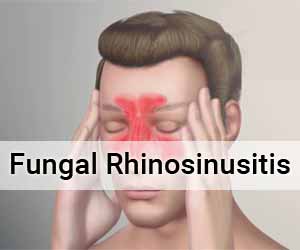- Home
- Editorial
- News
- Practice Guidelines
- Anesthesiology Guidelines
- Cancer Guidelines
- Cardiac Sciences Guidelines
- Critical Care Guidelines
- Dentistry Guidelines
- Dermatology Guidelines
- Diabetes and Endo Guidelines
- Diagnostics Guidelines
- ENT Guidelines
- Featured Practice Guidelines
- Gastroenterology Guidelines
- Geriatrics Guidelines
- Medicine Guidelines
- Nephrology Guidelines
- Neurosciences Guidelines
- Obs and Gynae Guidelines
- Ophthalmology Guidelines
- Orthopaedics Guidelines
- Paediatrics Guidelines
- Psychiatry Guidelines
- Pulmonology Guidelines
- Radiology Guidelines
- Surgery Guidelines
- Urology Guidelines
Fungal Rhinosinusitis: AIIMS 2019 guidance

All India Institute of Medical Sciences, Delhi has released 2019 AIIMS Antimicrobial Policy which has been prepared by the Department of Medicine with Multidisciplinary collaboration. The guidance for ENT Infections includes Fungal Rhinosinusitis the salient features of which are hereunder.
Fungal Rhinosinusitis is one of the most common types of fungal infections involving the inflammation of the lining mucosa of the paranasal sinuses.
Following are its major recommendations:
When to suspect:
Symptoms worsen/ fail to improve after initial antibiotic therapy even if after broadening coverage/switch to different antibiotic class
Severe rapidly progressive disease in immunocompromised, diabetic patients with ketoacidosis, transplant recipients, patients with hematologic malignancies, on chronic glucocorticoid or deferoxamine therapy- think Mucormycosis if black, necrotic eschars of the nasal cavity and turbinates, facial lesions, and exophytic or necrotic lesions of the hard palate.
How to confirm:
CT or MRI of the head or sinuses and
Biopsy with HPE/ KOH and culture:
i. Thin, hyaline septate hyphae, branched at acute angle-Aspergillus
ii. Broad, thick-walled, ribbon-like, aseptate hyphal elements that branch at right angles-Mucor.
Treatment:
a) Aspergillosis:
Preferred: Both surgery and systemic antifungal agents (Voriconazole/Liposomal AmB) are necessary. Voriconazole (6 mg/kg IV every 12 h for 1 d, followed by 4 mg/kg IV every 12 h; oral therapy can be used at 200–300mg BD)
Surgical removal alone can be used to treat Aspergillus fungal ball of the paranasal sinus.
Alternative: Liposomal AmB (3–5 mg/kg/day IV)
Special remarks:
Duration of therapy minimum 6-12 weeks
Primary combination therapy with antifungals is not routinely recommended
Therapeutic Drug Monitoring (TDM) should be done in patients receiving voriconazole (Range: 1-5 mg/L)
b) Mucormycosis:
Preferred: Both surgery and systemic antifungal agents are necessary.
Liposomal amphotericin B (at least 3-5mg/kg/day).
A lower dose can be used in cases of recalcitrant side effects for a minimum of 4 weeks
May be shifted to oral Posaconazole (800mg/day in 4 divided doses) after adequate amphotericin B.
Alternative: Amphotericin B deoxycholate (0.7-1mg/kg/day)
Special remarks:
Correction of the underlying cause
Duration of therapy not defined
Echinocandins can be combined with amphotericin B as salvage therapy
When shifting from amphotericin B to Posaconazole, one week of overlap may be beneficial
Posaconazole should be administered with fatty food and cola beverages
TDM for Posaconazole should be done if available.
References:
Chow AW, Benninger MS, Brook I, Brozek JL, Goldstein EJ, Hicks LA, Pankey GA, Selznick M, Volturo G, Wald ER, File TM Jr; Infectious Diseases Society of America. IDSA clinical practice guideline for acute bacterial rhinosinusitis in children and adults. Clin Infect Dis. 2012 Apr;54(8):e72-e112.
ICMR Treatment Guidelines for Antimicrobial Use in Common Syndromes. Upper Respiratory Tract Infections. 2017: 98-101

Disclaimer: This site is primarily intended for healthcare professionals. Any content/information on this website does not replace the advice of medical and/or health professionals and should not be construed as medical/diagnostic advice/endorsement or prescription. Use of this site is subject to our terms of use, privacy policy, advertisement policy. © 2020 Minerva Medical Treatment Pvt Ltd